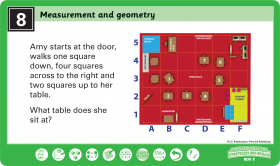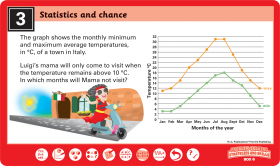- Tuesday 14 March 2017
- 0 Comments
With less than two months before the dreaded NAPLAN tests begin for Year 3, 5, 7 and 9 students, many parents, teachers and students are probably starting to feel anxious. But what causes this anxiety, what is the intention of the NAPLAN assessments and how can you ensure your children are as prepared for NAPLAN as possible, without wasting valuable teaching time?

The anxiety around NAPLAN is undoubtedly the amount of publicity the test results receive in the media. If individual student's or school's results fall below the national minimum standards, panic breaks out. Thoughts spring to mind, such as, 'Have I taught the students enough? Does my child need additional work?' Well, the answer is probably no!
The truth is, the NAPLAN tests are devised to encourage students to use higher-order thinking skills to determined what each question is asking. It then requires the student to create a plan of action before answering the question. The difficulty most students face during these tests is not how to solve the question, but rather working out what the question is asking in the first place! Students need to be given opportunities to solve problems—whether that 'problem' is working out what a question is asking, working out which strategy to use, or finding the answer, students need practice!
So what can you do to relieve the anxiety associated with NAPLAN this year?
Incorporate problem-solving into everyday classroom experiences
- Write one problem, with related question, on the board each day. These can be short or long problems and can cover any concept from any learning area, depending on your creativity! Students should identify what is being asked, rephrase it in their own words to show understanding, devise a plan and carry it out to produce an answer.
Encourage students to use strategies to find key information
- Students should practise highlighting or underlining key information in all learning areas. This is a skill required by students to complete the test in the given time constraints. Students will not have time to read and re-read information numerous times. They need key information available at a quick glance.
Encourage students to use strategies to decide the reasonableness of answers
- When solving questions with multiple-choice answers, students should be encouraged to eliminate answers that are clearly incorrect. This eliminates some answers instantly from the decision-making process.
- Students should also be encouraged to re-read the question and their answer to ensure their answer matches what is being asked. This will eliminate careless errors being made.
By incoropating these higher-order thinking skills into everyday lessons across all learning areas, students will be better equipped to tackle problems they face in the future, both in educational settings and the real world.
How can R.I.C. Publications help?
Register your interest for our new Problem-solving strategies and skills box set.



